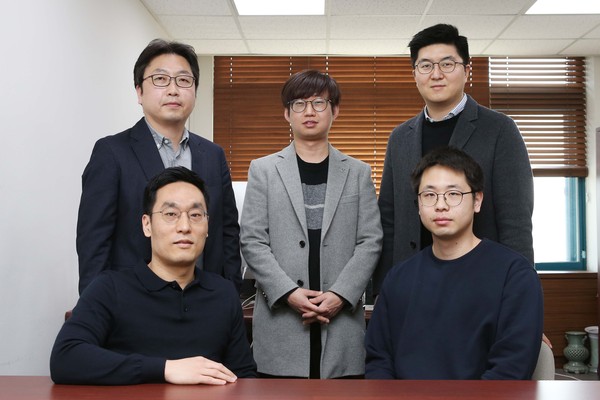A joint research team led by Professor Byungha Shin from the Department of Materials Science and Engineering developed ultra-efficient and durable solar cells using wide bandgap perovskite material. The findings were published in the online edition of Science on March 26.

According to the Shockley-Queisser model of solar devices, the efficiency of conventional single layer solar cells cannot exceed a 33.7% threshold due to spectrum losses and the effects of electron-hole recombination. In order to overcome this limitation, researchers have been working on the development of double layer solar cells, or tandems, that are produced by connecting several light-absorbers.
Perovskite refers to a class of materials with a particular crystal structure in which many different ions can be embedded, meaning they can be used in a wide range of engineering applications. To make use of perovskite in the upper layers of solar cells, the research team altered the material’s optical properties so that it could absorb a wider range of solar energy. However, these adjustments come at a price: perovskite becomes less stable and highly vulnerable to external conditions, such as moisture and, ironically, light.
Nevertheless, the researchers revealed that they were able to control and modify the electrical and structural characteristics of the two-dimensional stabilization layer formed inside the perovskite’s thin film by introducing new additives, including anions. This development allowed them to stabilize perovskite. Furthermore, the team managed to produce a tandem solar cell with photovoltaic efficiency of 26.7% by stacking the modified perovskite material and silicon solar cells.
The team believes that the technique they developed will set the direction for the semiconductor stabilization technology, and, in the future, hybrid perovskite material could be used in other photoelectric devices, such as light-emitting diodes and photo detectors. “Perovskite solar cell technology has made remarkable progress over the past decade, and now it is time to think about its commercialization. Achieving high efficiency through a heterogeneous junction structure with silicon solar cells will help speed up the commercialization of perovskite solar cell technology,” said Professor Shin, adding that research results will serve as a cornerstone for the implementation of tandem solar cells with efficiency of more than 30% in the future.
The research was conducted with support from the National Research Foundation of Korea, the Korea Institute of Energy Technology Evaluation and Planning, the Ministry of Trade Industry and Energy of Korea, and the U.S. Department of Energy. Corresponding authors are Professor Shin, Jin Young Kim of Seoul National University, and Kai Zhu of National Renewable Energy Laboratory based in the USA. Other contributors include PhD students from Professor Shin’s Energy Materials Lab: Daehan Kim, Jekyung Kim, Passarut Boonmongkolras, Seong Ryul Pae, and Minkyu Kim.

